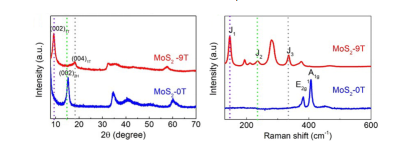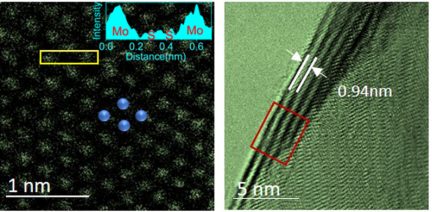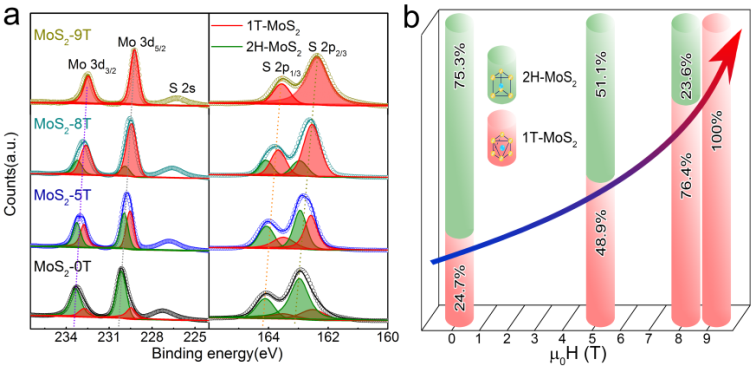Chinese researchers developed a facile strategy of hydrothermal method to synthesize 1T-MoS2 and 1T-WS2 under high magnetic fields.
Two-dimensional transition-metal dichalcogenides (2D TMDs) MX2 materials such MoS2 and WS2, show rich physical and chemical properties as well as wide applications such as electrodes in electrochemical devices, hydrogen evolution, catalysis.
Generally, MoS2 presents several crystal structures including 2H with semiconducting property and 1T with metallic property. Naturally, the 2H structure is thermodynamic stable, whereas the 1T phase is metastable.
To obtain metallic 1T MoS2, several routes have been provided such as alkali metal intercalation, mechanical exfoliation, plasma hot electron transfer, electron-beam irradiation, mechanical strains, and hydrothermal reaction.
However, the as-synthesized 1T-MX2 is easily converted into the 2H phase by contamination, the occurrence of intermediary phases, and oxidation. There has been no efficient route to synthesize clean and ambient-stable 1T-MX2.
Magnetic fields as a type of important thermodynamic parameters in materials processing could transfer high energy on an atomic scale of substances, resulting in the expected atomic and molecular alignments.
Besides the manipulation of the morphology, the product phases can be tuned by applied magnetic fields in processing. Even metastable phases could be induced or stabilized by applied magnetic fields during synthesis processing.
Because of the importance of magnetic fields in phase engineering, it is supposed that phase manipulation could be realized in MX2 by magnetic fields.
Given this, the team led by ZHU Xuebin of Institute of Solid State Physics, Hefei Institutes of Physical Science developed the hydrothermal synthesis of 1T-MoS2 and 1T-WS2 under high magnetic fields.
Pure 1T-MoS2 and 1T-WS2, showing high ambient-stability for even more than one year, were successfully synthesized by hydrothermal processing under high magnetic fields named as magneto-hydrothermal processing. Phase engineering could be realized by magnetic fields in processing. With increasing the magnetic field, 1T phase concentration was gradually expanded.
These results could provide a clean and facile method to prepare ambient stable 1T-phase MX2.
Link to the paper: Highly Ambient-Stable 1T-MoS2and 1T-WS2by Hydrothermal Synthesis under High Magnetic Fields

Figure 1. Home-made high magnetic field hydrothermal apparatus with field up to 10 T. (Image by ZHU Xuebin)

Figure 2. XRD (left) and Raman (right) results of magneto-hydrothermal synthesized MoS2. (Image by ZHU Xuebin)

Figure 3. HAADF-STEM top-view (left) and side-view (right) results of magneto-hydrothermal synthesized MoS2 under 9T. (Image by ZHU Xuebin)

Figure 4. XPS (left) and 1T phase concentration of MoS2 by magneto-hydrothermal synthesis under different magnetic fields. (Image by ZHU Xuebin)
Contact:
ZHOU Shu
Hefei Institutes of Physical Science (http://english.hf.cas.cn/)
Email: zhous@hfcas.ac.cn
 Tel: +86-551-65591206
Tel: +86-551-65591206
 Fax: +86-551-65591270
Fax: +86-551-65591270
 Emai: zhous@hfcas.ac.cn
Emai: zhous@hfcas.ac.cn
 350 Shushanhu Road
350 Shushanhu Road